Over the years, Belgium has given us a great number of things. We’ve all heard of Belgian chocolates and Belgian waffles, but Belgium is also home to some of the best beer in the world. One of these less known, but still delicious, beers is the Belgian Dubbel. While the dubbel certainly isn’t as famous as waffles or chocolates from this tiny country, it’s a local favorite and one that’s worthy of mention.
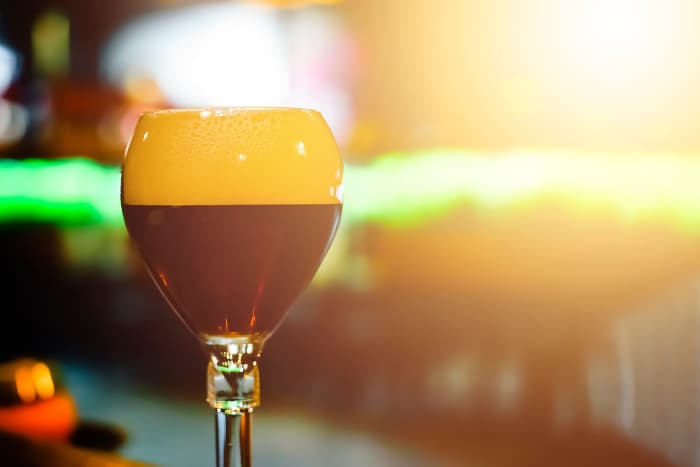
Let’s take a deeper look at what a Belgian Dubbel is and how it was created.
What Exactly is a Belgian Dubbel?
The Belgian Dubbel is a very unique type of beer, both in its appearance and its origins. hough darker than some Belgian beers, it can also take a brownish hue making it appear look similar to a stout. You can expect a taste of sweetness derived from the malt additives as well as hints of chocolate and caramel. Hop bitterness can vary but is typically low, bordering on medium, and somewhat noticeable.
Where Dubbels get interesting is when you add esters and yeast into the mix. Fruity esters derived from yeast, specifically banana-flavored ones, can be apparent. There should also be a slight haziness to the color and yeastiness to the flavor. While Belgian Dubbels can be somewhat strong or intense, they’re nothing compared to their close relatives, the Tripels or Quadrupels, also from Belgium.
History of the Belgian Dubbel
Belgian Dubbels have a unique, distinguished, and somewhat religious history as far as beers are concerned. Dubbels are predominantly Belgian in origin and are actually a type of Trappist beer. Don’t let the term confuse you, because Trappist just means that it was originally a beer brewed by monks at monasteries. That’s right, monks used to brew beer and quite a bit of it. It’s unknown when the very first dubbels were brewed, but it’s believed to be sometime during the Middle Ages.
The dubbel was then revived and brewed at Westmalle Abbey in 1856 and was made available to the public in 1861. For over 50 years, the monks of Westmalle Abbey continued to brew the Belgian dubbel. It wasn’t until 1926 when the recipe was altered and sold to the Dubbel Bruin, who went on to brew dubbels on a commercial level.
After World War II, Belgian dubbels and other abbey and trappist beers started to gain popularity outside of Belgium. Eventually, dubbels, tripels, and quadrupels became their own distinct brand and category of beer, and breweries around the world began imitating them. Despite the dubbels, tripels, and quadruples religious origins, they’re now famous around the world for their devilishly high alcohol content and delightful taste.
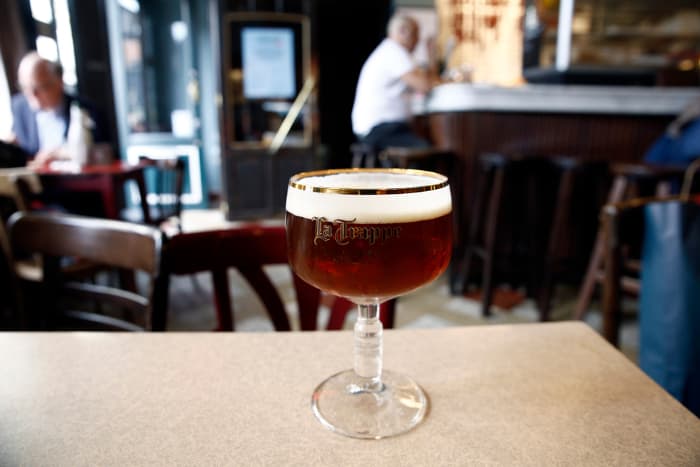
Characteristics of a Belgian Dubbel
Flavor and Aroma
In general, Belgian dubbels are rich, malty beers in both taste and completion. They should also have a slight spice and fruitiness to them, but not to the extent of the Belgian Dark Strong Ale. Some of the fruity flavors that you might pick up on are raisin, prune, and dates, all darker fruits that contribute to the dark flavor and color.
One of the focal points of dubbels is the heavy caramelized beet sugar that gets added before the boiling process and completely foments into the alcohol. The beet sugar along with crystal malt and dark candy sugar give dubbels their sweetness. However, there should also be a noticeably hoppy bitterness with the initial taste, but none with the after-taste.
Belgian dubbels do a better job than most of toeing the line between sweetness and bitterness. The addition of dark, chocolate, and caramel malts also gives this variety a slightly roasted and coffee-like flavor. There’s a lot of leeway in how your dubbel ends up tasting because of its loose origins and often imitated recipe.
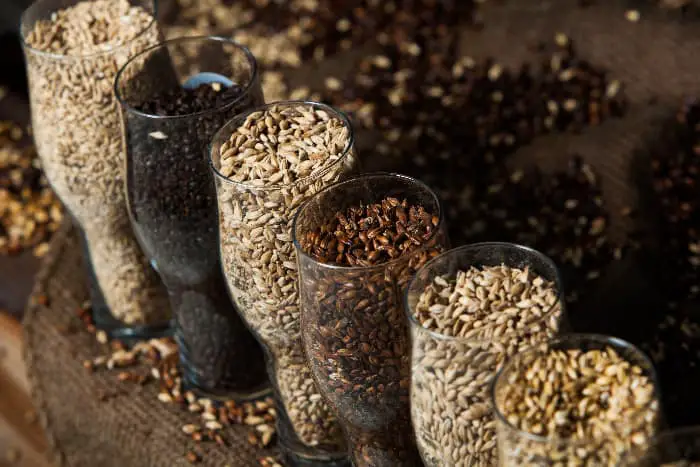
Malt Character
Malts are a featured ingredient in Belgian dubbels. Chocolate, toasty, and caramel malts are traditionally used in dubbels.
Mouthfeel
Dubbels typically have a medium to full body, meaning that this isn’t like drinking a light beer. You’ll definitely be drinking your calories when you have one or two of these suckers.
Color
The color of a Belgian dubbel is one of its most interesting components. Dubbels are brown to dark brown in color and you sometimes feel like you’re drinking a mug of coffee if you look at it. However, after try a couple sips and you’ll be needing coffee.
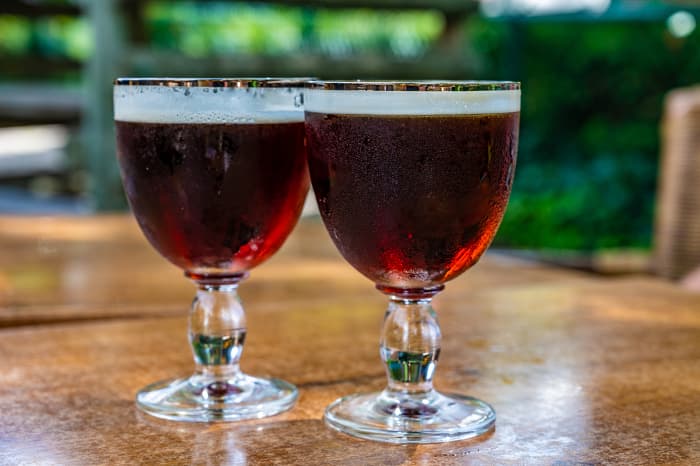
Esters
Esters are also a featured ingredient in Belgian dubbels, specifically banana esters.
Alcohol Content
The alcohol content in dubbels is fairly high, but thanks to all the complementary ingredients and flavors, you hardly notice it. The average ABV of a dubbel can be anywhere between 6% and 9%. If you really want something strong, try tripels and quadrupels!
Food Pairings With a Belgian Dubbel
Belgium is very close to Germany in terms of proximity as well as culture. Many of the foods, drinks, and styles of Germany are also popular in Belgium. As such, any type of dominantly German food such as smoked sausage, sauerkraut, or washed rind cheese goes great with a Belgian dubbel. You can finish your meal with some milk chocolate and wash it down with yet another Belgian dubbel.
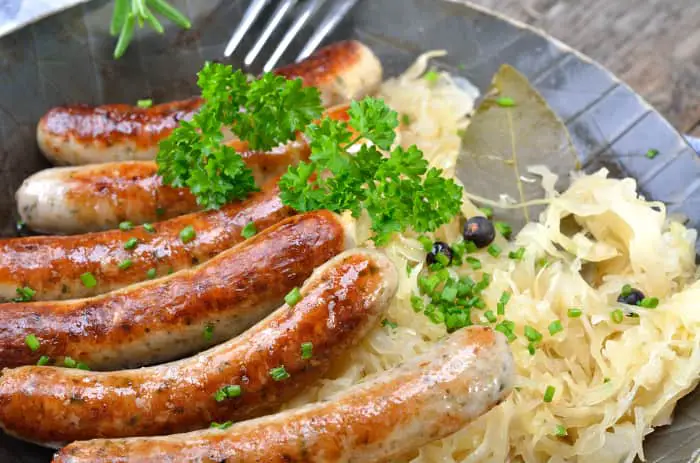
What are the Ingredients in a Belgian Dubbel?
The complicated flavor and color of a Belgian Dubbel is largely due to its complex mixture of ingredients. They typically include Belgian yeast strains that are prone to producing higher contents of alcohol. Banana and similar esters, and phenolics that give off a spicy, perfumy, peppery, and rose-like flavor and aroma are commonly used.
The overall impression is that of complex grainy bill, but this isn’t set in stone, thanks to the diversity in early dubbels. Traditionally, this type of brew uses Belgian Pils malt and incorporates a flair of syrup that’s been caramelized. It can also include unrefined sugars of other varieties to add to the taste, aroma, and mouthfeel. A variety of British hops are also used, specifically Tettnang or Styrian Goldings.
Can I Brew My Own Belgian Dubbel at Home?
The process of brewing a Belgian ale as well as the ingredients you need is quite complicated. Keep in mind that this beer was invented by monks in a monastery who did nothing besides read the Bible and make beer. They had time to experiment and perfect their brew, which not everyone has time for.
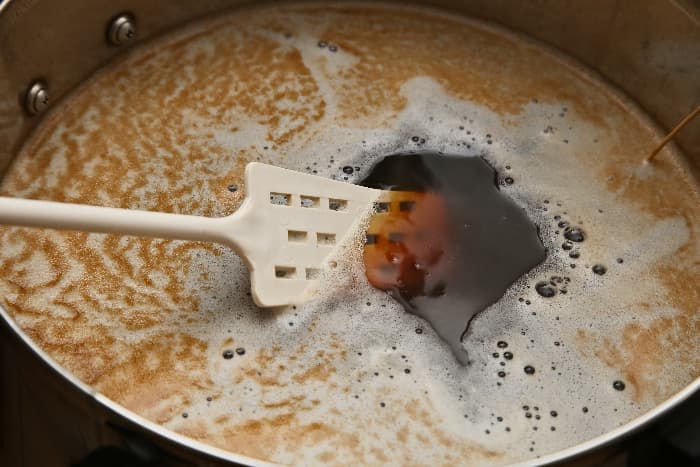
Getting your hands on the correct ingredients, finding a recipe that works for you, and having the right equipment is paramount. However, if you can check off each of these boxes, there’s no reason why you can’t brew your own Belgian Dubbel at home.
Where Can I Get a Good Belgian Dubbel?
Although dubbels originated in Belgium and took their sweet time getting to the international stage, they’re now available all over the world. Here is a list of some of the top Belgian dubbels available on the market.
- Brother David’s Double, Anderson Valley Brewing Co.
- Abbey Dubbel, Elm City Brewing Co.
- Double, Allagash Brewing Co.
- Ommegang Abbey Ale, Westmalle
- Trappist Dubbel, Chimay Premiere
- Lost and Found, The Lost Abbey
- Hell Hath No Fury Ale, Bell’s Brewery
- Abbey Dubbel, Flying Fish Brewing Company
This is definitely not a comprehensive list and there are literally thousands of options when it comes to Belgian Dubbels.
Enjoy a Belgian Dubbel
Although Belgian Dubbels have been around for hundreds if not thousands of years, it remains relatively unknown in too many corners of the world. If you’ve never had the pleasure of trying one of these fine brews, you would do well to put it on your bucket list of beers. It’s a truly unique beer, with one of the most interesting origin stories out there.
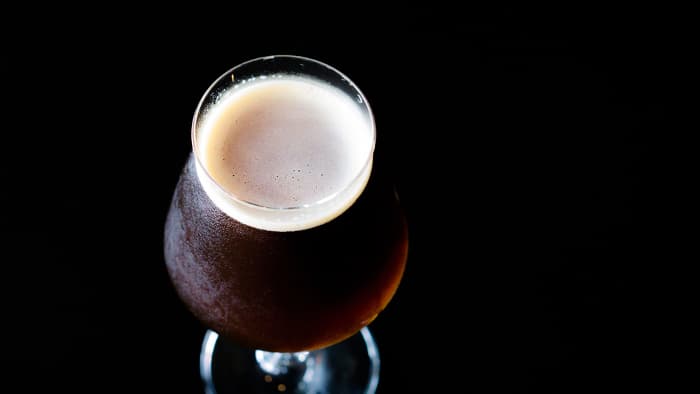
To learn about other kind of beer, read our beer styles blog posts.
